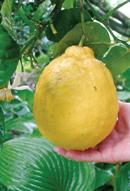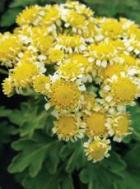Kitchen Garden
What to plant now
Plant broccoli, cauliflower, Chinese cabbage, Brussels sprouts, endive, kale, leeks, lettuce, silverbeet, spinach and radish.
Sow broad beans directly into well-limed soil.
Peas can also be sown straight into the ground.
Now’s the time to plant onions, including shallots and spring onions. They like a sunny, sheltered spot in limed soil.
 Plant garlic cloves in a light, well-drained soil in full sun. Dig in plenty of compost and well-rotted manure before planting, or a general fertiliser high in potash. Garlic from the supermarket is often sprayed with an anti-sprouting chemical, so buy cloves from a garden centre or mail-order nursery. Plant cloves just below the soil surface, 10cm apart.
Plant garlic cloves in a light, well-drained soil in full sun. Dig in plenty of compost and well-rotted manure before planting, or a general fertiliser high in potash. Garlic from the supermarket is often sprayed with an anti-sprouting chemical, so buy cloves from a garden centre or mail-order nursery. Plant cloves just below the soil surface, 10cm apart.
Plant Jerusalem artichoke tubers.
Plant strawberries, raspberries, gooseberries and currants.
Plant citrus trees in a sunny, well-drained position. In cold areas, wait until after the risk of severe frost has passed.
Feeding and Maintenance
Feed leafy vegetables, including lettuce, silverbeet, spinach, cabbage, cauliflower and broccoli, with a high nitrogen fertiliser. Leeks will also benefit from a regular feed.
Cut back and divide globe artichokes.
Divide rhubarb and replant into well-manured soil.
Mulch fruit trees and berry fruit plants to prevent weeds, which compete for nutrients.
Sprinkle a generous handful of Dolomite lime to each square metre around deciduous fruit trees.
In warmer regions, prepare a bed in advance for early potatoes. Dig soil over to aerate it, and add compost. If you have a green crop, dig it in and add some blood and bone. Potatoes like a rich, well-drained soil. Your bed should be ready for planting in a few weeks. Meanwhile, leave seed potatoes in open trays in good light to sprout. Potatoes can be planted out when shoots are 2.5-3cm long.
Flower Garden
What to plant now
 Sow seeds or plant seedlings of alyssum, calendula, Canterbury bells, carnations cornflowers, dianthus, delphinium, forget-me-nots, hollyhocks, honesty, Iceland poppies, larkspur, nemesia, nigella, pansies, primula, snapdragon, statice, stock, sweet peas and violas.
Sow seeds or plant seedlings of alyssum, calendula, Canterbury bells, carnations cornflowers, dianthus, delphinium, forget-me-nots, hollyhocks, honesty, Iceland poppies, larkspur, nemesia, nigella, pansies, primula, snapdragon, statice, stock, sweet peas and violas.
Plant lilium bulbs or divide existing ones. Dig up bulbs, divide bulb scales and plant in seedraising mix.
Plant hellebores. Contrary to popular belief, hellebores do best in a position that receives some sun in winter. Incorporate compost into the soil before planting.
Look out at garden centres for flowering protea. Plant in an open, sunny position with plenty of air circulation. Soil must be free-draining, so plant in raised beds, if necessary, to improve drainage. Hold off on the fertilisers – proteas resent lime and added phosphate.
Camellias like acid soil and good drainage. Add organic matter to the soil when planting but don’t fertilise until spring. Camellias grow well in large pots.
Feeding and Maintenance
Feed polyanthus and primrose with liquid fertiliser. Watch out for snails on new growth.
Continue feeding annual flowers regularly with liquid fertiliser.
Sprinkle a bit of lime around carnations, dianthus, gyphsophila and clematis.
Lift and divide daylilies.
When dahlias have died down, lift tubers and store in a dry place.
Prune back spent perennials such as penstemons and asters.
It’s your last chance to view rose blooms before ordering plants for mid-winter planting. Take a trip to your local botanic garden or specialist rose grower to see which varieties grow well in your area.
Prepare rose beds now by digging in plenty of compost or aged cow manure.
The combination of cooler weather and overwatering can prove fatal to indoor plants. Ease off watering and fertilising as the weather cools.
Copyright © Weekend Gardener: www.weekendgardener.co.nz
For subscriptions and further infomation please go to the Weekend Gardener website.











buzzyBee15626 - 16 years ago
I’ve only just seen the article titled “Gardening this winter”. it is now 23 August, so strickly speaking still winter, but can I still do all that stuff as advised or is it now too late, as I rather think it may be. May I humbly suggest that the author adds the date he/she submitted the article?